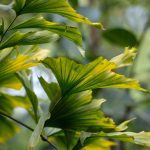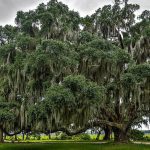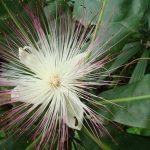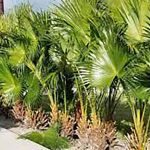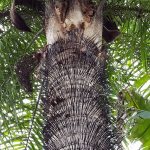
Cashew
The cashew tree (Anacardium occidentale) is a tropical evergreen tree native to South America in the genus Anacardium that produces the cashew seed and the cashew apple accessory fruit.[1][2] The tree can grow as tall as 14 metres (46 feet), but the dwarf cultivars, growing up to 6 m (20 ft), prove more profitable, with earlier maturity and greater yields. The cashew seed is commonly considered a snack nut (cashew nut) eaten on its own, used in recipes, or processed into cashew cheese or cashew butter.[3] Like the tree, the nut is often simply called a cashew. Cashew allergies are triggered by the proteins found in tree nuts, and cooking often does not remove or change these proteins.[4]
In 2019, four million tonnes of cashew nuts were produced globally, with Ivory Coast and India as the leading producers. As well as the nut and fruit, the plant has several other uses. The shell of the cashew seed yields derivatives that can be used in many applications including lubricants, waterproofing, paints, and, starting in World War II, arms production.[5] The cashew apple is a light reddish to yellow fruit, whose pulp and juice can be processed into a sweet, astringent fruit drink or fermented and distilled into liquor.[3]


